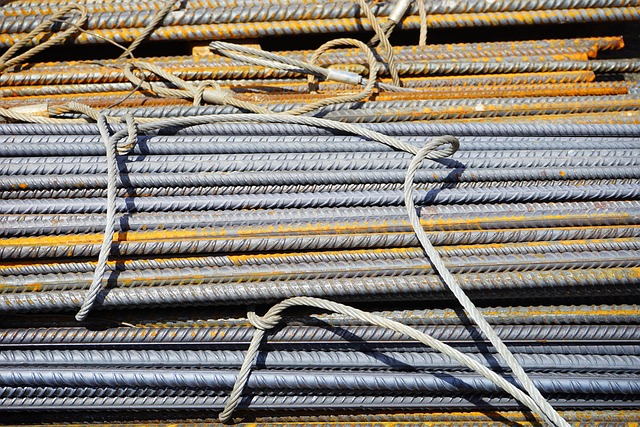Heavy-duty vacuum excavation is a cutting-edge solution for infrastructure development, offering precise, efficient, and non-destructive digging. Professional contractors use advanced high-capacity systems to swiftly remove soil and debris, minimizing disruptions in urban and complex environments. This method revolutionizes excavation by providing an alternative to traditional techniques, ensuring faster project completion with reduced costs and environmental impact. Choosing the right contractor is vital; look for experienced professionals with modern equipment, excellent safety records, and transparent communication. Advanced vacuum excavation technology is transforming construction, offering versatile, efficient, and non-disruptive solutions for critical infrastructure projects.
“Infrastructure projects demand efficient and precise excavation methods to meet modern construction standards. This is where heavy-duty vacuum excavation steps in as a game-changer, offering both speed and precision. In this comprehensive guide, we explore the world of industrial vacuum excavation, its benefits for construction, and how advanced technology is revolutionizing non-destructive digging techniques. From understanding the power of high-capacity vacuum services to selecting the right professionals, this article provides valuable insights into supporting crucial infrastructure projects.”
Understanding Heavy-Duty Vacuum Excavation: A Powerful Tool for Infrastructure Projects
Heavy-duty vacuum excavation is a powerful tool that plays a pivotal role in infrastructure projects, offering a non-destructive heavy-duty digging method with remarkable precision and efficiency. This advanced vacuum excavation technology leverages high-capacity vacuum systems to suck up soil and debris, making it an ideal solution for complex excavation tasks. Professional vacuum excavation contractors utilise this industrial vacuum excavation technique to safely and effectively expose underground utilities, lay foundations, and construct critical infrastructure without causing damage.
Unlike traditional digging methods that can be invasive and time-consuming, heavy-duty vacuum excavation provides a clean, controlled environment. Its high-capacity capabilities enable rapid excavation, reducing project timelines and minimising disruptions. This method is especially valuable in densely populated urban areas where navigating labyrinthine underground networks of utilities requires meticulous care and expertise. By employing advanced vacuum excavation technology, contractors can confidently navigate these challenges, ensuring projects are completed promptly and with minimal impact on surrounding infrastructure and services.
The Benefits of High-Capacity Vacuum Excavation Services in Construction
In today’s fast-paced construction industry, efficient and safe excavation is paramount for successful infrastructure projects. High-capacity vacuum excavation services offer a game-changer in this domain. This advanced non-destructive heavy-duty digging technique employs industrial vacuum excavation technology to remove earth and materials with precision and minimal damage. It’s an alternative to traditional methods, which can be disruptive and time-consuming.
Professional vacuum excavation contractors armed with these high-capacity tools can navigate complex landscapes, ensuring safety and reducing environmental impact. This method is particularly beneficial in urban settings where space is limited and the risk of hitting underground utilities is high. By employing robust excavation capabilities, projects can be completed faster, costing less and causing less disturbance to surrounding areas and communities.
Choosing the Right Professional Vacuum Excavation Contractors: Key Considerations
When considering heavy-duty vacuum excavation for your infrastructure project, selecting the right contractor is paramount. Look for professionals equipped with advanced vacuum excavation technology offering both high-capacity and non-destructive digging capabilities. This ensures minimal damage to underground utilities and infrastructure during excavation, a critical aspect of industrial vacuum excavation services.
Key considerations include their experience in handling similar projects, safety records, fleet maintenance, and customer reviews. Reputable professional vacuum excavation contractors will invest in modern equipment and regularly train their staff to stay up-to-date with the latest techniques and safety protocols. They should also provide comprehensive project planning, timely responses, and transparent communication throughout the process.
Advanced Vacuum Excavation Technology: Revolutionizing Non-Destructive Digging Techniques
Advanced Vacuum Excavation Technology is transforming the landscape of infrastructure development by offering a revolutionary approach to non-destructive digging. This cutting-edge method, known for its robust capabilities, provides an efficient and precise alternative to traditional excavation techniques. By employing high-capacity vacuum systems, industrial vacuum excavation can swiftly and safely remove materials without causing damage to surrounding structures or delicate environments.
The technology’s versatility is a significant advantage, catering to diverse infrastructure projects, from utility relocation to underground construction. Professional vacuum excavation contractors utilize this advanced toolset to deliver high-quality, time-efficient services. With its ability to precisely target specific areas, heavy-duty vacuum excavation ensures minimal disruption, making it an indispensable asset for modern construction and renovation efforts.
In conclusion, adopting heavy-duty vacuum excavation and its advanced applications is a game-changer for infrastructure development. The benefits of high-capacity industrial vacuum excavation services are clear: it offers precise, non-destructive heavy-duty digging capabilities, enhancing safety and efficiency in construction projects. When selecting professional vacuum excavation contractors, consider their expertise, technology, and safety records. By embracing these cutting-edge techniques, the construction industry can streamline operations, reduce damage risks, and create a more robust infrastructure landscape.
